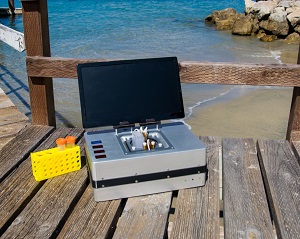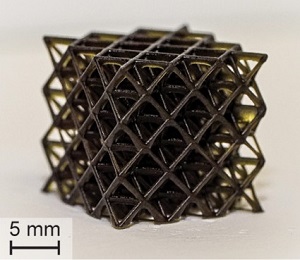FOR IMMEDIATE RELEASE

“A Mechanical Mechanism for Vitamin E Acetate in E-cigarette/Vaping-Associated Lung Injury”
Chemical Research in Toxicology
E-cigarette, or vaping, associated lung injury (EVALI) has sickened thousands of people, most under the age of 35. Studies have linked vitamin E acetate, an oily substance in some vaping liquids, to the disorder. Now, researchers reporting in ACS’ Chemical Research in Toxicology have uncovered a possible mechanism: Vitamin E acetate could increase the fluidity of lung surfactant, causing the surfactant layer to collapse, contributing to symptoms such as shortness of breath and lung inflammation.
The lungs are made up of alveoli, which are tiny cavities where gas exchange takes place. Oxygen that is breathed in diffuses across the alveolar membrane and into the capillaries, while carbon dioxide passes in the opposite direction to be exhaled. Lung surfactant, a fluid made up of lipids and proteins, coats the inner surface of the alveoli, reducing the surface tension so that the alveoli can easily inflate when someone inhales. Scientists still don’t know exactly how the surfactant layer expands and contracts when a person breathes in and out, but one hypothesis is that certain lipids get “squeezed out” or expelled when the alveoli contract, and then spread across the surface again when the alveoli expand. Drew Marquardt and colleagues wondered how vitamin E acetate, which has been found in the lungs of most EVALI patients but not in healthy controls, could influence this process.
To find out, the researchers added increasing amounts of vitamin E acetate to two model lung surfactants in the lab: one containing only the lipid DPPC (the primary component of lung surfactant), and the other containing a mixture of the four major lipids in the fluid. Using a combination of neutron spin echo and small-angle neutron scattering, the team found that increasing vitamin E acetate concentration increased membrane fluidity and compressibility for both model surfactants, up to a plateau. These findings suggest that, in the presence of the vaping additive, the lung surfactant monolayer could “squeeze out” lipids prematurely during exhalation, thereby becoming unstable. However, the researchers note that these experiments were conducted in a model system without protein components or alveoli, so more work still needs to be done.
The authors acknowledge funding from the Natural Sciences and Engineering Research Council of Canada, the Ontario Graduate Scholarship program, the National Institute of Standards and Technology, the Center for High Resolution Neutron Scattering, the National Science Foundation, the WE-SPARK Health Institute and the University of Windsor.
To automatically receive press releases from the American Chemical Society, contact newsroom@acs.org.
Note: ACS does not conduct research, but publishes and publicizes peer-reviewed scientific studies.
Note: ACS does not conduct research but publishes and publicizes peer-reviewed scientific studies.




